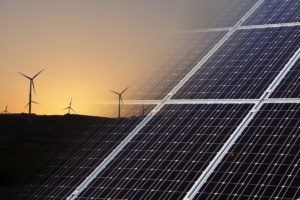
Though poor in fossil fuel reserves, Turkey boasts an abundance of renewable energy sources (RES). So much so that the government has made meeting 30% of its energy consumption needs through renewables, one of its key objectives for 2023. The law on utilization of renewable energy resources (Law no. 5346), has been effective since 18 May 2005 and has been amended several times, as recently as October 2013.
Solar energy – until now in the background, as opposed to wind and hydro – has finally started to attract investments. Turkey holds a high potential for solar energy due to its geographical location; according to recent studies, it has an annual sunshine duration of 2,640 hours (7.2 hours a day) and an average annual solar irradiance of 1,311 kWh/m2. Its technical solar energy potential stands at 380b kWh/year.
Currently, solar plants classified as large-scale installations (above 1MW) or small-scale installations (up to 1MW) are subject to different regulations. Companies wishing to build large-scale solar plants must first obtain a preliminary license from the Energy Market Regulatory Authority (EMRA), which gets converted into a full license upon commencement of the plant’s construction. During such preliminary phase, which lasts a maximum of 24 months, the generation company obtains the required permits to build its generation facility.
At present, the energy produced with photovoltaic technology benefits of an incentive of $13,3 cent /kWh for 10 years, provided the production plant has started operations before 31 December 2015.
Additionally, if the mechanical or electro-mechanical equipment of the power plant is produced locally, a premium shall be added to the feed-in tariffs during the first 5 years of operation. However, the Council of Ministers (2013/5625) decided that the PV plants commencing operation between 1 January 2016 and 31 December 2020, will be entitled to benefit from the fee in tariffs and the additional premium specified by the Renewable Law, too.
With regards to small-scale plants, no license is required, and the procedure is much more streamlined for establishing large-scale units, in that case, the owner can be an individual entity – and not just a legal entity – and no tender is required. All that is needed is a request made to the local utility company and a permit from the municipality to build the plant. The last step is the signing of a so-called “interconnection agreement” between the applicant and the utility company. The producer can use the generated energy for his self-consumption needs, but also sell the energy to the Regional Network Operator.
The current Law establishes in fact that power plants under 1 MW capacity are entitled to direct their excess (unused) energy to the grid and be considered Renewable energy support mechanism participants.
The feed-in-tariff policy sets a fixed and guaranteed price at which generators can sell power within the electricity market. As a result, investors can obtain a constant price linked to the US dollar, thereby avoiding surprises in revenue expectations due to price fluctuations.
Ankara is pursuing a model of “widespread generation” across the national territory, aimed at multiplying small-scale energy plants in such a way that consumers can be turned into producers, able to access energy and monitor its utilization independently.
This system allows investors to minimize their losses, as their plants’ proximity to the final consumer implies a shorter transport route and consequently a lower dispersion along the distribution line. Such cost-cutting of the electrical bills is particularly significant in the case of energy-intense activities.